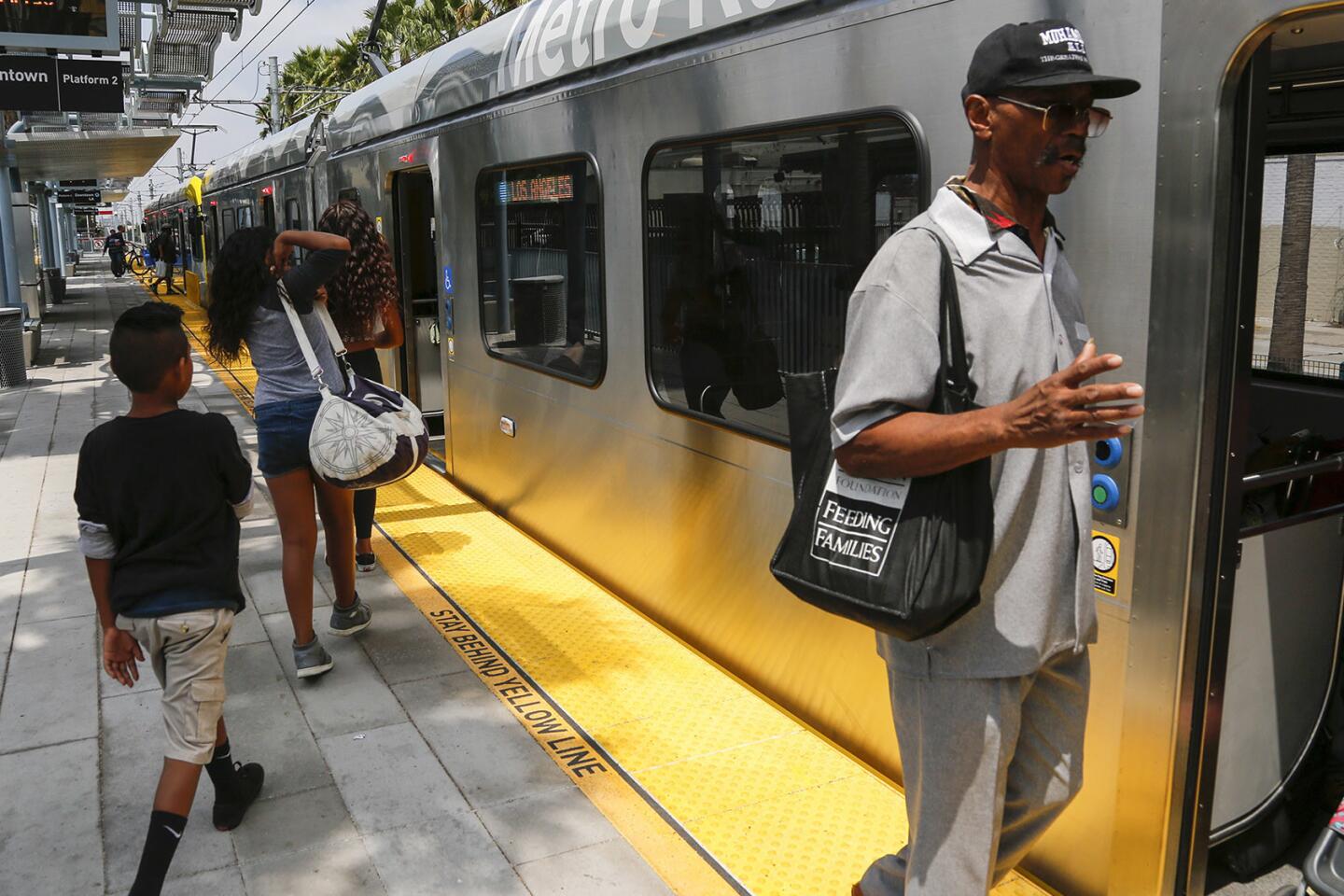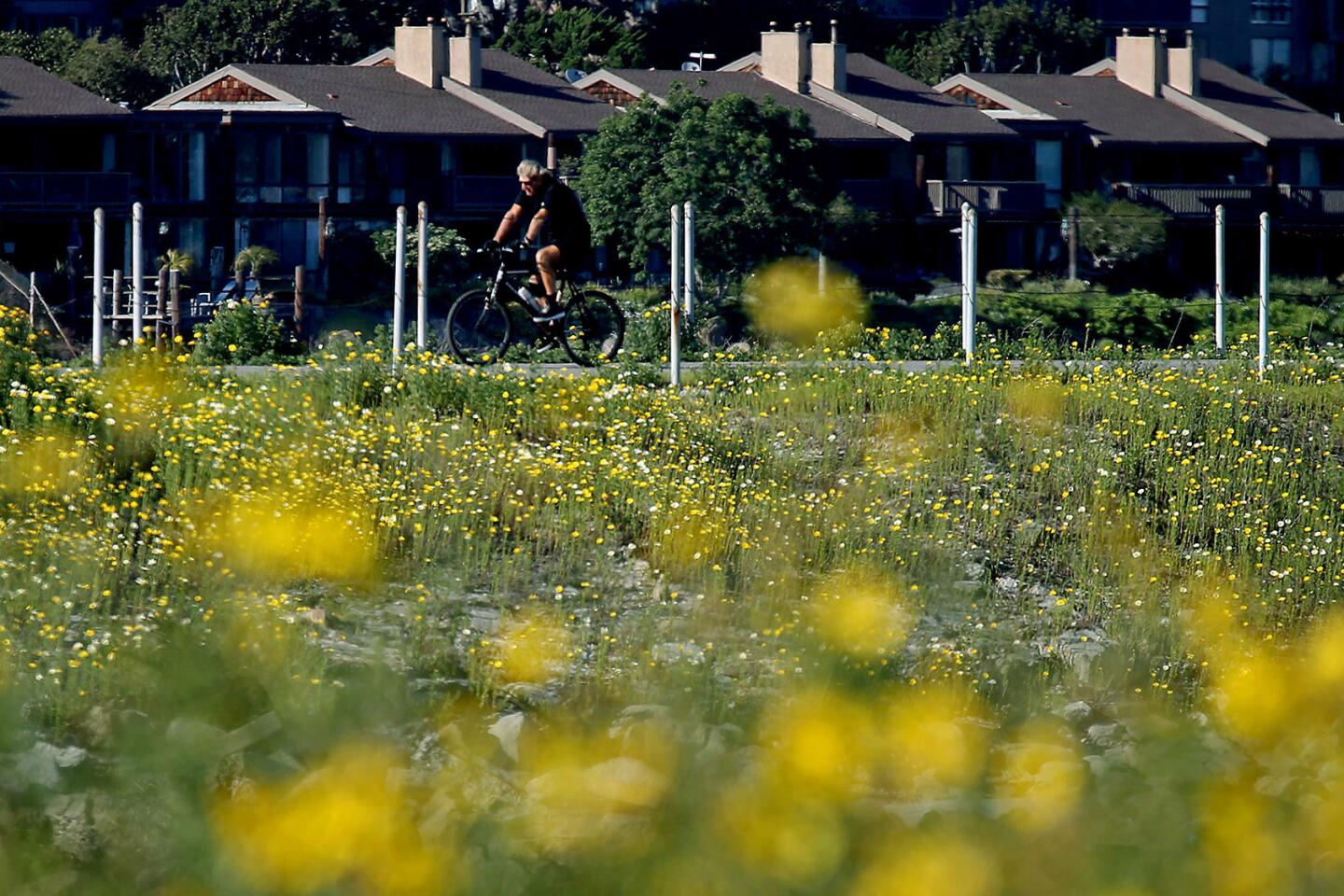Neighborhood Spotlight: West Adams lures with its architecture, small-town vibe
No discussion of the history of West Adams can be complete without drawing a distinction between the district of mansions that make up the heart of Historic West Adams, and the relatively newly designated neighborhood to its west that shares its name.
Whereas Historic West Adams is a close-in suburb dating from the 1880s, the bulk of the “new” West Adams neighborhood was developed in the 1920s, on a wide swath of land between two major east-west streetcar routes: the Los Angeles Railway West Adams Boulevard line and the Pacific Electric Santa Monica Air Line (the Expo Line’s predecessor).
The lines traversed an agricultural no man’s land. It wasn’t a destination, just a series of farms and marshes on the way to Culver City or the beach resorts of Santa Monica and Venice of America.
But as the city expanded westward in the 1920s, the lima bean fields were plowed under and the swampland drained to make room for homes. The new arrivals were drawn to the city by plentiful work in the region’s booming manufacturing, petroleum and construction industries.
The dream of homeownership for Angelenos of more modest means was born here in West Adams and the other neighborhoods built across the city in the 1920s. The old model of homeownership — one that depended on enormous wealth, as typified by Historic West Adams and its baroque palaces — was swept away.
Affordable land and the cheaper, more easily replicated design of tract homes made it possible for almost anyone to buy a home and still have enough left over to purchase a car to go in its driveway. The boom of the 1920s became the template for all succeeding booms, save the current explosion in high-rise residential developments.
That template and the dream it represented forever changed L.A. The streetcar lines were ripped up, and entire neighborhoods were bulldozed to make way for freeways as the city expanded further and further out in the pursuit of more cheap land to build more subdivisions.
The housing bust put an end to that era, as the development of the far-flung suburbs of Riverside County was swamped by a wave of foreclosures. Close-in homes are again in demand, and West Adams seems poised to be the next L.A. neighborhood to watch as those horizontal flipper fences go up, and prices follow.
Neighborhood highlights
Culver City-adjacent: West Adams offers relatively reasonable prices right next door to this booming tech hub, and the Expo Line makes commuting a breeze.
Parks and rec: With easy access to Kenneth Hahn Park, the Ballona Creek Bike Path and the Baldwin Hills Scenic Overlook, West Adams is a great choice for outdoors enthusiasts.
Culinary delights: Whether you crave soul food, down-home barbecue, pupusas or tacos, there is a place in West Adams for you.
Neighborhood challenge
A boom for some, a bust for others: The neighborhood seems certain to change as commercial development at its margins increases, making it more attractive to new buyers.
Expert insight
David Raposa of City Living Realty has been working in West Adams for 32 years and said the beautiful architecture brings people in, and the small-town neighborly vibe makes them stay.
“The homes and streets here have context; they’re more than just a box of square footage,” Raposa said. “But at the same time, the people here know each other’s names.”
During the last half decade, new restaurants have been slowly popping up alongside historic neighborhood staples, but Raposa said there’s enough room for all to coexist. He said desirable properties usually net multiple offers, so prospective buyers need to be in a strong financial position to land a home.
“Sometimes, even writing a letter to the seller can be a good idea,” Raposa said. “Prove your dedication to the house and the neighborhood.”
Market snapshot
In the 90016 ZIP Code, based on 21 sales, the median sales price in July for single-family homes was $645,000, according to CoreLogic. That was a 2.4% increase in median sales price year over year.
Report card
Schools inside the West Adams boundary include Marvin Elementary and Cienega Elementary, which scored 794 and 792, respectively, in the 2013 Academic Performance Index.
Bright spots in the area include Los Angeles Center for Enriched Studies, which scored 897, and Baldwin Hills Elementary, which scored 864. Alta Loma Elementary scored 763.
Times staff writer Jack Flemming contributed to this report.
MORE FROM HOT PROPERTY
Moving pros help pro athletes tackle those unexpected moves
Former Angels slugger Vladimir Guerrero lists O.C. estate for $2.2 million
Titans quarterback Marcus Mariota makes a play for oceanside cottage in Hawaii
More to Read
Sign up for Essential California
The most important California stories and recommendations in your inbox every morning.
You may occasionally receive promotional content from the Los Angeles Times.












